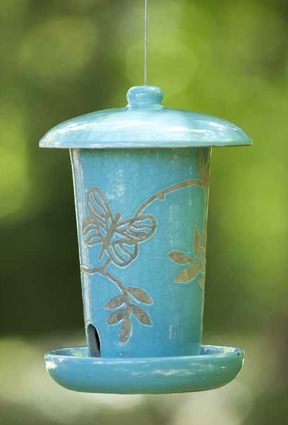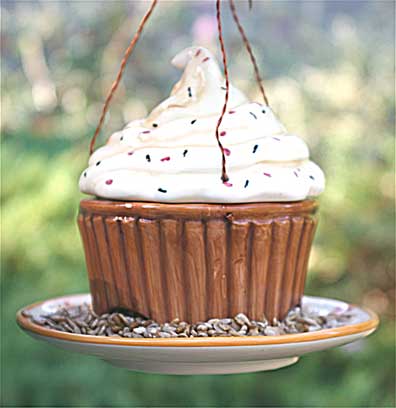-
Butterfly Houses may offer protection from weather
Butterflies’ migration spans thousands of miles, and although they can survive cold weather, these winged wonders will die if they get wet when temperatures drop. Providing butterfly houses may just help the Monarch’s population. Although they don’t hibernate during the warm summer season, creating a butterfly-friendly habitat will help them flourish and thrive.
Because butterflies will not drink from an open water source, things like leaf misters and puddlers in your yard are most helpful for a fresh water source during extreme heat. Having both the host plant for their metamorphosis and nectar plants for food will encourage population growth too.
Check out this interesting video from Defenders of Wildlife and Discovery on the Monarch Butterfly.
-
The Big Meow Project Tackles Overpopulation in CA
THE BIG MEOW IS A BIG HELP FOR YOUR WALLET AND CAT OVERPOPULATION
SEAACA & Pet-Connections to Provide No-Cost Spay & Neuter Programs for Owned Free-Roaming Cats(LOS ANGELES, CA) August 11, 2011 – SEAACA (Southeast Area Animal Control Authority; www.seaaca.org) and Pet-Connections are helping cat owners who live in the 14 cities served by SEAACA with the BIG MEOW, a compelling program to provide no-cost spay and neuter serviced for owned free-roaming cats. The year long, national program kicks off at SEAACA on August 17 with photo opportunities during cat drop-off (7:15 a.m. to 8:45 a.m.) and pick-up (2:00 p.m. to 4:00 p.m.).
SEAACA and Pet-Connections will offer a variety of services for owned free-roaming cats at absolutely no cost to cat owners. Services include spay or neuter, microchip ID (so cats have permanent ID in addition to a collar), vaccines (FVRCP and rabies), one month application of flea and tick control and basic health care at the time of surgery.
The BIG MEOW is a significant step in improving cat health and curtailing overpopulation. Spayed or neutered cats tend to want to stay inside with their families. Cats that roam, however, can get lost, hit by passing cars, be exposed to pesticides, poisons or unhealthy plants and disturb neighbors. Moreover, an un-spayed female cat, her mate and all of their offspring, producing two litters per year, with 2.8 surviving kittens per litter, can result in thousands of cats (over 2,000 cats in four years and over 370,000 cats in seven years!).
“The BIG MEOW delivers monumental benefits for everyone,” noted SEAACA Executive Director, Dan Morrison. “It helps owned free-roaming cats lead safer, healthier lives. It also helps manage the surplus cat problem, and the no-cost element helps personal finances in tough economic times,” he added. The Big Meow will result in over 50 surgeries at SEAACA on the “kick-off day” (August 17) with partner veterinarians in private practice performing another 100 to 150 surgeries on that day; the annual goal for SEAACA is 3,000 surgeries. The Inland Valley Humane Society is concurrently doing the same program.
In order to participate in the BIG MEOW, cats must be four months to seven years of age. Only owned free-roaming cats are eligible (no feral or wild cats will be accepted). Additionally, cat owners must provide proof of residency in SEAACA service cities and each cat must be in a properly secured kennel or carrier.
For more information about the BIG MEOW or SEAACA, please visit www.seaaca.org, or call the appointment line at 562-803-3301 ext. 251.
About SEAACA
SEAACA (Southeast Area Animal Control Authority) provides animal care and control services for 14 cities in southeast Los Angeles County and northern Orange County, including Bell Gardens, Bellflower, Buena Park, Downey, Lakewood, La Palma, Montebello, Norwalk, Paramount, Pico Rivera, Santa Fe Springs, South El Monte, South Gate and Vernon. SEAACA’s Animal Care Center located in Downey reunites pet owners with lost pets and assists new pet owners with pet adoptions. SEAACA’s Animal Wellness Clinic, also located in Downey, spays and neuters all adoption animals plus provides vaccinations and microchipping to the general public. For more information about SEAACA, please visitwww.seaaca.org.
About Pet-Connections
Pet Connections, Inc. is a national organization dedicated to developing coalitions between pet owners, community leaders and animal welfare organizations to reduce the number of stray and unwanted cats and dogs. -
un-square and un-boring hopper bird feeders
With so many variations of bird feeders out there, how would you ever pick the right kind if you’re new to backyard birding? Aside from offering fresh water in a bath, choosing several feeders which hold different kinds of food is very effective for enticing feathered friends.
There are five basic types of wild bird feeders, although variations abound! Hopper Bird Feeders like this ceramic blue one also add a decorative touch to any garden or landscape.
Tube Feeders dispense seed and allow multiple small birds to feed at once. The ones with very tiny ports are designed for thistle or nyjer seed-which is a favorite of Goldfinches and Pine Siskins.
Hopper Bird Feeders are likely the most popular type of feeder as they attract a wide variety of birds and generally have larger seed capacities. They feature removable or lifting lids for easy filling and cleaning, and a ledge, or perching space to accommodate several birds.
Platform or Fly-Thru Feeders will attract the widest variety of birds, they’re versatile for offering several kinds of treats that you can change with seasons. One drawback to this type of feeder is is that seeds can become contaminated with droppings and may mold quicker with the right weather conditions. A fly-thru feeder’s roof has an advantage to protect seed from weather.
Nectar Feeders are meant for Hummingbirds and Orioles, and may be seasonal according to your location.
We use them from mid-March through December in this North Georgia yard. Commercial nectar mixes are widely used, but we think the home-made sugar water solution is preferred.
Suet Feeders are usually a cage-type or bag feeder and should be protected from squirrels (and other pets). They’re great for offering fruit slices in summer, and nesting material in early spring. Many species covet suet for it’s high protein and fat content, especially during cold winter months. No-melt varieties of suet are also made for warm-weather feeding, as migratory birds also enjoy this special treat.
So that’s a basic run-down of wild bird feeders… although some may be more wild than others! This ceramic cupcake is also a variation of the popular hopper feeder.



